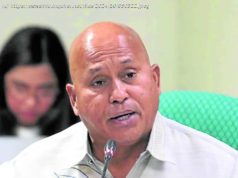Political polarization has been on the rise in U. S. states during the past decade.
Democrats have hit the political trifecta in New Jersey and Washington state, seizing complete control of the governor’s office and legislative chambers in the 2017 elections.
Time to let fly with a big liberal agenda? Maybe, but taking a few modest steps to the left is probably more realistic.
In a decade that has seen a resurgence of American political polarization, two-thirds of all state governments now will be fully controlled by either Democrats or Republicans. That rivals the predominant levels of single-party governance last seen in the post-World War II era.
Yet recent experience has shown that new Republican or Democratic majorities can still splinter among factions of moderates and hard-core ideologues. Even when a party bands together for bold initiatives, the results can be mixed.
Democratic Gov. Jay Inslee, of Washington, already appears to be lowering partisan expectations as he prepares to work with a new Democratic-led Senate and House that will have majorities of just a few seats over Republicans.
« With very closely held margins like this, neither party controls the Legislature, » Inslee told The Associated Press in a phone interview while on a trade trip to Zurich, Switzerland. He added: « I’m hopeful more bipartisan votes will occur. »
New Jersey might be positioned for a somewhat more aggressive Democratic agenda.
Newly elected Democratic Gov. Phil Murphy will be paired with a legislature that is roughly two-thirds Democrats and had been at odds with Gov. Chris Christie, a Republican forced out of office by term limits. The first bill the Senate president wants to send to Murphy would boost taxes on high-earners, something Christie vetoed five times. Murphy also has expressed support for legalizing recreational marijuana, which Christie also opposed.
Democrats will have full control in eight states, all touching the Pacific or Atlantic oceans, when the newly elected officials are sworn into office. Republicans will have full control of 25 states. Sixteen will have politically divided governments, most pitting legislatures led by one party against a governor of another. The Nebraska Legislature is officially nonpartisan.
Just five states — Alaska, Colorado, Maine, New York and potentially Virginia, depending on the outcome of several too-close-to-call House races — could have functional control of their legislative chambers split among the two major parties. That’s slightly less than the historic norm, according to an AP analysis of data dating to 1900 provided by the National Conference of State Legislatures.
The number of unified legislatures paired with same-party governors has surged significantly since the 1996 election, when just 37 percent of states had single-party governance. It has remained above 60 percent of all states since Republicans swept into control of many capitols in 2010. (Single-party governance peaked at 83 percent of states after the 1946 and 1952 elections).
Republicans have used their state majorities to cut taxes, limit union powers and expand school-choice initiatives, sometimes with more success than others.
This year, three states with new Republican governing trifectas made a strong push to enact right-to-work laws barring mandatory union fees in workplace contracts. Legislation passed quickly in Kentucky and Missouri, although opponents gathered enough petitions to suspend Missouri’s new law pending a voter referendum in 2018.
In New Hampshire, the right-to-work bill passed the Senate but failed in the House as 32 of 223 Republican representatives bucked the new governor on an issue that had been part of the GOP platform. Not only did the House kill the bill, it moved to « indefinitely postpone » it, meaning no similar bills can be debated for the remainder of the two-year session.
« It’s always a challenge. We never feel like we can take Republican votes for granted, » said Greg Mourad, vice president for legislation at the National Right to Work Committee.
In Kansas, Republican Gov. Sam Brownback enacted major income tax cuts in 2012 and 2013 that were touted as an economic model for conservatives. But Kansas struggled to balance its budget as tax revenue fell and promised economic gains failed to make up the difference.
The GOP-controlled Legislature reversed course earlier this year, overriding Brownback’s veto to raise income taxes by $1.2 billion over two years. Brownback has since resigned to accept a job in President Donald Trump’s administration.
Kansas is now regularly cited by Republicans in neighboring Missouri and elsewhere as a model for how not to use majority powers.
Democrats also have had problems managing majorities. In 2006, the first year in office for former New Jersey Gov. Jon Corzine, a Democrat, state government shut down amid a budget standoff between him and the Democratic-led Legislature.
California often is cited as the gold standard of Democratic strength, with supermajorities in the Legislature and control of the governor’s office and every other statewide office.
Democrats there have picked fights with Trump and advanced a decidedly liberal agenda. But some of the harshest critiques of the Legislature have come from the left.
A plan to eliminate health insurance and provide government-funded coverage to all has stalled in the California Assembly, leading some Democratic activists to launch a longshot bid to unseat Assembly Speaker Anthony Rendon. Some environmental organizations also have been frustrated that Democrats haven’t toughened the state’s cap-and-trade program to reduce greenhouse gas emissions.
Democrats in Washington may be constrained by political and legislative realities. They are scheduled to have only a 60-day session in 2018, and the agenda will include passing a budget for state construction projects that stalled this year amid disputes in the politically split Legislature. Then Democrats will be forced to defend their new majority when legislative seats are back on the ballot in November 2018.
Washington’s Republican Senate Majority Leader, Mark Schoesler, said voters have benefited from having « checks and balances » inherit in a split Legislature and warned that « fiscal responsibility is in jeopardy » with Democrats in full control.






